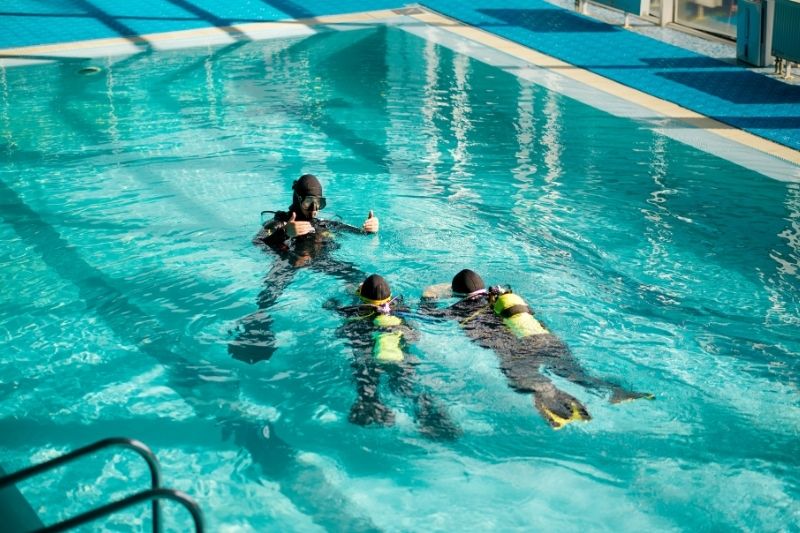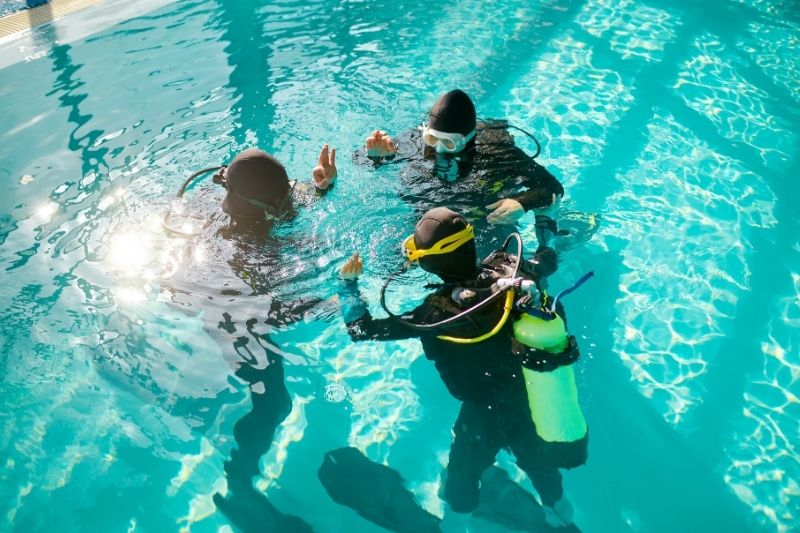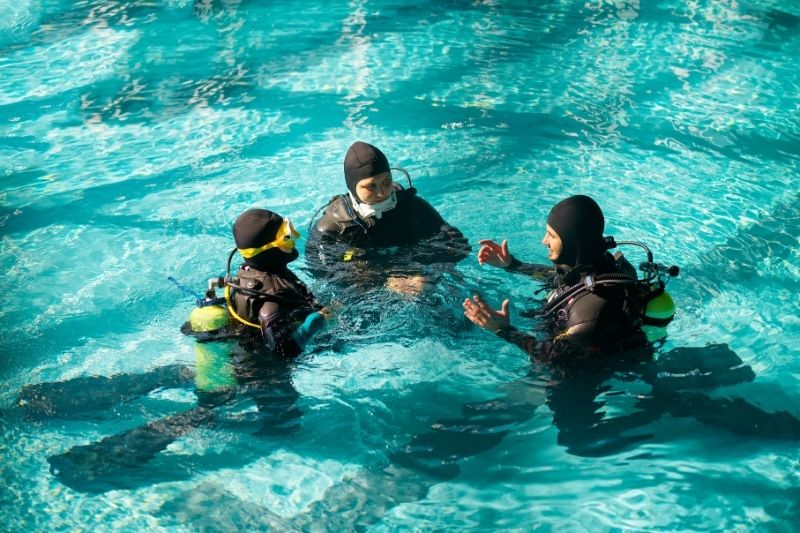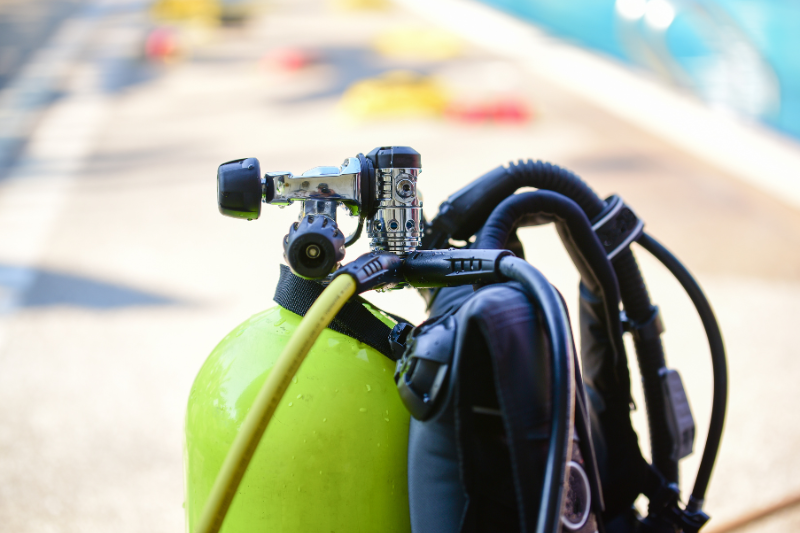An aqualung is a type of scuba diving equipment that provides divers with the ability to breathe underwater. It is also commonly known as a self-contained underwater breathing apparatus (scuba).
The term “aqualung” was coined by the French naval officer and explorer Jacques-Yves Cousteau and engineer Émile Gagnan, who developed the first successful open-circuit scuba device in 1943.
Why Do Divers Use It?

An aqualung is a portable device that allows divers to breathe underwater by supplying compressed air from a tank through a demand regulator. The system typically consists of the following main components:
- Compressed Air Tank: This is a high-pressure cylinder that holds breathable air. The tanks are usually made of aluminum or steel and come in various sizes, with the capacity measured in cubic feet or liters.
- Regulator: The regulator is a critical component that reduces the high pressure of the compressed air in the tank to a breathable pressure. It also delivers the air to the diver on demand, hence the term “demand regulator.”
- Buoyancy Control Device (BCD): The BCD is a jacket-like device that helps divers control their buoyancy underwater. By inflating or deflating the BCD, divers can ascend, descend, or maintain neutral buoyancy.
- Pressure Gauge: This gauge allows divers to monitor the amount of air remaining in the tank, ensuring they return to the surface with sufficient air reserves.
- Dive Computer: Modern aqualungs often include a dive computer that tracks depth, time, and decompression limits to help divers manage their underwater time safely.
- Mouthpiece or Full-Face Mask: Divers use a mouthpiece attached to the regulator or a full-face mask to breathe the air supplied by the aqualung.
How Does It Work?

An aqualung works by working off the principles of gas pressure and the demand delivery of air. Here’s a step-by-step explanation of the process:
High-Pressure Air Storage
Air is compressed into the tank at a high pressure, typically between 2,000 and 3,000 psi (pounds per square inch). This high pressure allows a significant amount of air to be stored in a relatively small volume.
Regulation of Air Pressure
When the diver inhales, the demand regulator reduces the high-pressure air from the tank to a pressure that is safe and comfortable to breathe. This reduction happens in two stages:
- First Stage: The first stage of the regulator attaches to the tank valve and reduces the pressure from the tank (around 2,000-3,000 psi) to an intermediate pressure (about 140 psi above ambient pressure).
- Second Stage: The second stage further reduces this intermediate pressure to ambient pressure, which matches the surrounding water pressure at the diver’s depth, and delivers it to the diver on demand.
Air Delivery
As the diver inhales through the mouthpiece or full-face mask, the second stage regulator senses the decrease in pressure and releases air from the tank to the diver. When the diver exhales, the exhaled air is vented out through an exhaust valve into the water.
Buoyancy Control
The BCD can be inflated or deflated to control the diver’s buoyancy. By adjusting the amount of air in the BCD, divers can achieve neutral buoyancy, allowing them to hover effortlessly at any depth.
Monitoring and Safety
The pressure gauge and dive computer provide crucial information about the remaining air supply and dive conditions, helping divers manage their time and depth to avoid decompression sickness and ensure a safe return to the surface.
Different Types of Aqualung Systems

There are several types of aqualung systems available today, each designed for specific diving conditions and preferences:
- Open-Circuit Scuba: The most common type of aqualung, open-circuit scuba systems expel exhaled air into the water. These systems are widely used for recreational diving due to their simplicity and reliability. They consist of a tank, regulator, BCD, and gauges or dive computer.
- Closed-Circuit Rebreathers (CCR): Rebreathers recycle the diver’s exhaled air by removing carbon dioxide and replenishing oxygen, allowing for longer dive times and reducing the amount of gas needed. CCRs are more complex and require additional training but are favored by technical divers and those exploring deeper or more extended underwater environments.
- Semi-Closed Rebreathers (SCR): These systems combine elements of both open-circuit and closed-circuit designs. They allow some exhaled gas to be vented into the water while recycling the rest, offering a compromise between simplicity and extended dive duration. SCRs are less common than open-circuit systems but are used in specific technical and professional diving scenarios.
- Surface-Supplied Diving Equipment (SSDE): Although not a true aqualung, SSDE systems are worth mentioning. They provide air from the surface via a hose, allowing for extended underwater work without the limitations of tank capacity. SSDE is commonly used in commercial and military diving operations.

